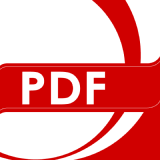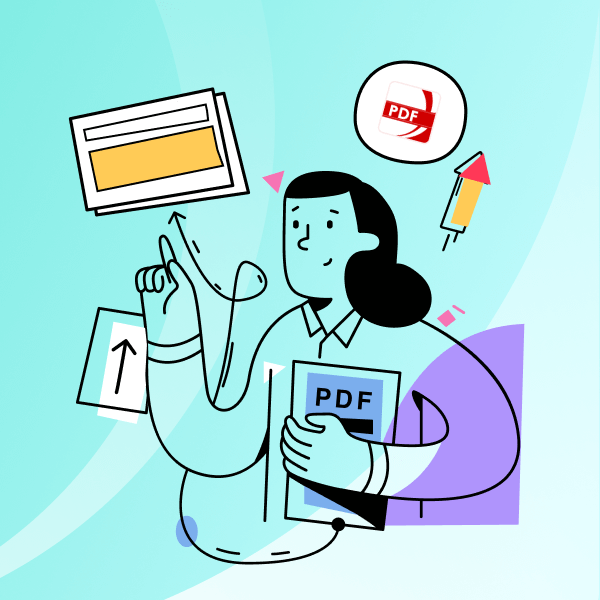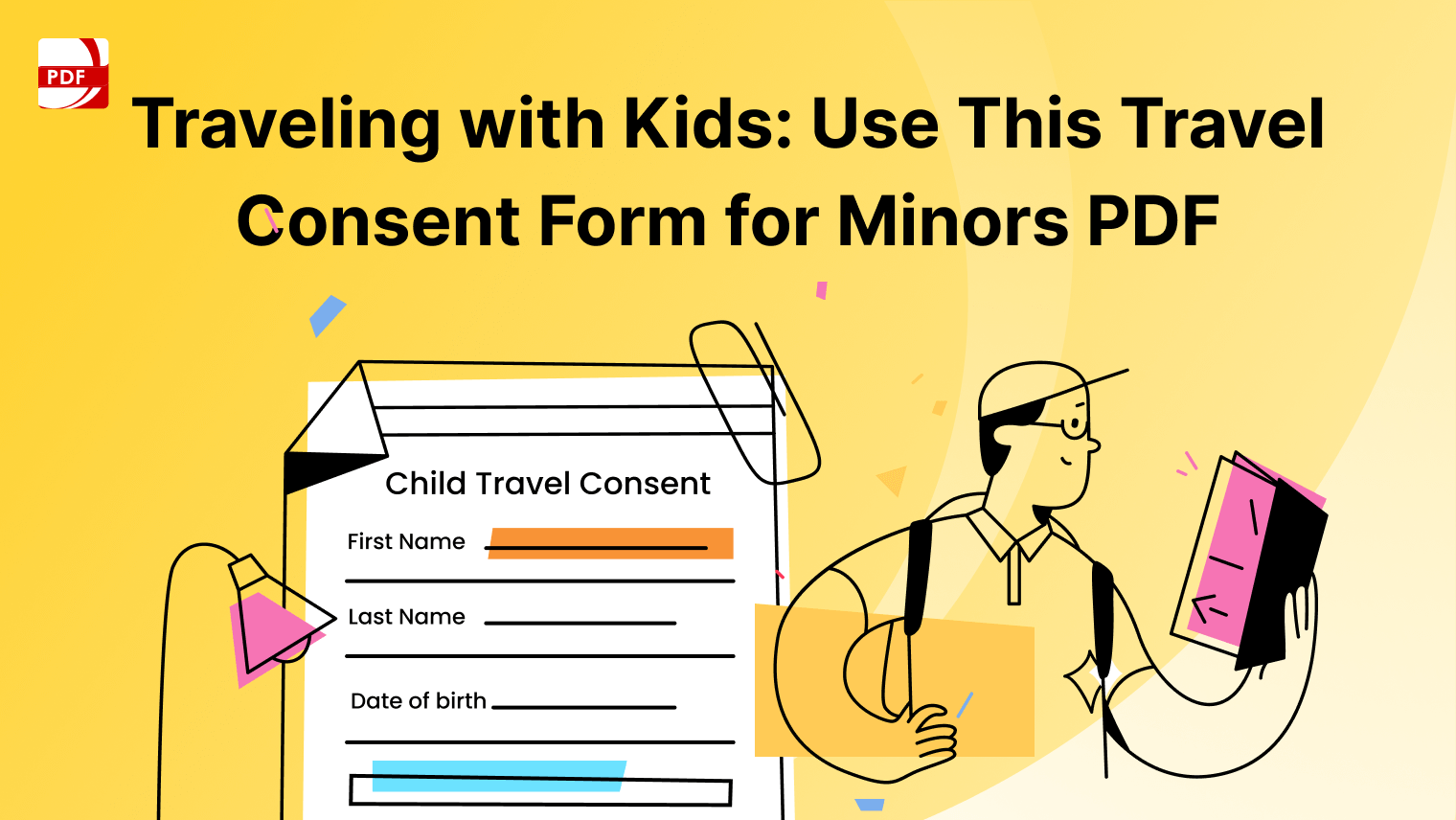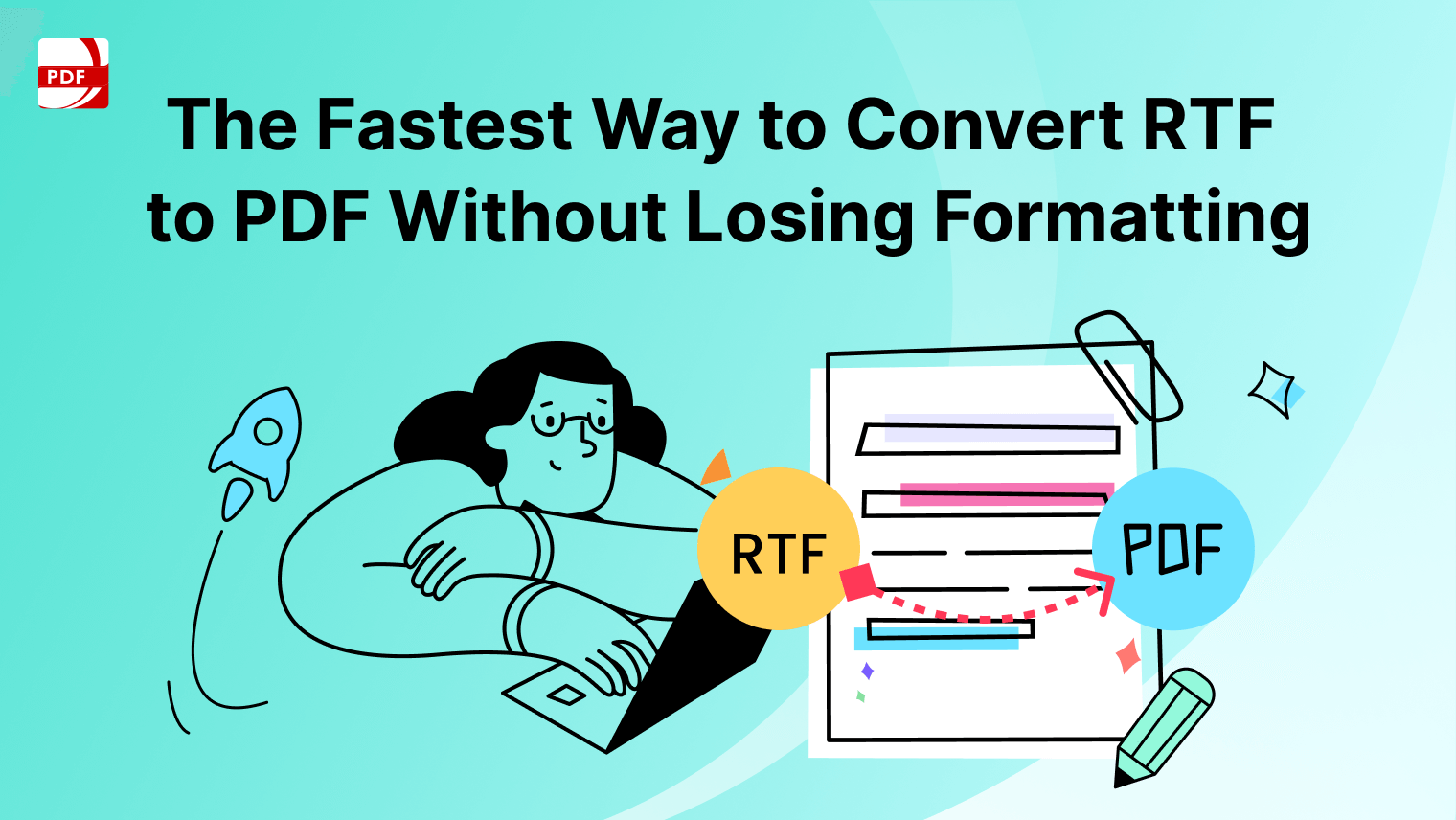PDFs maintain format integrity across multiple platforms. However, when it comes to extracting data from these files, many users face challenges, like the tedious process of retyping text manually or requiring extra software to extract image data.
Whether you aim to extract text, tables, image files, or entire files, knowing how to efficiently retrieve this data with our potent tool can save you the tedious task.
- How to Extract Data from a PDF on Windows
- How to Extract Data from a PDF on Mac
- Reasons to extract data from a PDF
- Best Practice to Extract Data from a PDF
- Extracting Data from a PDF: FAQs
How to Extract Data from a PDF on Windows
Use PDF Reader Pro as your extraction solution when retrieving data from a PDF document on your Windows operating system.

Navigate, edit, and
convert PDFs like a Pro
with PDF Reader Pro
Easily customize PDFs: Edit text, images,
pages, and annotations with ease.
Advanced PDF conversion: Supports
multi-format document processing with OCR.
Seamless workflow on Mac,
Windows, iOS, and Android.
Step 1: Open Your Original File
Step 2: Begin the Extraction Process
- Extracting Images
- Right-Click on the Image File
- Select "Extract Image"

Image Source: PDF Reader Pro
- Extracting Pages
- Click on "Page Edit" within PDF Reader Pro
- Select the pages you want to extract and click "Extract" to save them as a separate PDF file.
- Alternatively, click "Extract Selected Pages" and choose one or separate files.

Image Source: PDF Reader Pro
- Extracting Text After a Scan Process
- Click "OCR" from the additional tools
- Select which parts of the document you want to extract text from
- Save it in a PDF format for processing

Image Source: PDF Reader Pro
How to Extract Data from a PDF on Mac
Use the advanced PDF tools offered by PDF Reader Pro (with no need for extra software) to remove PDF objects using your Mac operating system.

Navigate, edit, and
convert PDFs like a Pro
with PDF Reader Pro
Easily customize PDFs: Edit text, images,
pages, and annotations with ease.
Advanced PDF conversion: Supports
multi-format document processing with OCR.
Seamless workflow on Mac,
Windows, iOS, and Android.
Step 1: Open Your Original PDF File
Step 2: Begin the Extraction Process
- Extracting Images
- Click on "Tools" on your device's main menu bar
- Select "Extract Images"
- Save images from PDF file in your desired file size

Image Source: PDF Reader Pro
- Extracting Pages
- Click on "Page Edit" within PDF Reader Pro
- Select the pages you want to extract and click "Extract" to save them as a separate PDF file.
- Alternatively, click "Extract Selected Pages" and choose one or separate files.

Image Source: PDF Reader Pro
- Extracting Text After a Scan Process
-
- Click "OCR" from the additional tools
- Select which parts of the document you want to extract text from
- Save it in a PDF format for processing, checking the file size
-

Image Source: PDF Reader Pro
Reasons to Extract Data from a PDF
Extracting data from a PDF can be essential for various reasons across different professional, academic, and personal spheres. Here are some compelling reasons why one might need to extract data from a PDF with our advanced solutions:
-
Data Analysis: PDFs might contain valuable data in tables or charts that need to be analyzed. Extracting this data allows it to be imported into analytics software or spreadsheet programs for further examination.
-
Content Repurposing: If you want to utilize content from a PDF in a presentation, report, or another document format, you'd need to extract the necessary text, images, or data.
-
Document Editing: PDFs are not always easily editable. By extracting content, you can make modifications using a word processor or another software tool and then convert it back to a PDF if needed.
-
Accessibility: Some PDFs, especially scanned ones, may not be accessible to those using screen readers. Extracting the data can allow it to be presented in a more accessible format.
-
Digital Archiving: Extracting content from older PDF documents and saving them in editable or database-compatible formats can ensure that they're easier to access and search through in the future.
-
Translation: For multilingual purposes, you might need to extract text from a PDF to translate it into another language using translation software, especially with academic articles requiring accurate text recognition.
-
Database Population: PDFs might contain information that needs to be input into a database. Extracting this data in a structured format can make this process more efficient.
-
OCR Needs: Scanned PDFs are image-based, meaning the text isn't directly selectable. To make them searchable or to edit them, one has to extract the text using advanced technology in the form of Optical Character Recognition (OCR). This converts it to a better format for processing.
-
Backup: Extracting content from a PDF can serve as a backup measure, especially if the original sources of the content (like a Word document or Excel spreadsheet) are lost.
-
Avoiding Manual Entry: Manually typing out content from a PDF is a tedious process and can result in errors. Extracting data is basic method to save time and ensure accuracy.
-
Legal and Compliance Reasons: In some fields, especially legal and financial ones, there might be a need to extract specific data from PDFs to meet compliance regulations or for evidence in legal cases.
-
Interoperability: If you're working in an environment that uses multiple software platforms, extracting data from a PDF can ensure that the information is usable across different applications.
Best Practice to Extract Data from a PDF
There are a few current methods for extracting data from a PDF but there are a few best practices you can follow so it doesn't turn into a tedious process:
Demystifying Income Reporting: IRS Form W-2 Explained
A comprehensive guide to understanding and utilizing form W-2 for tax compliance.
1. Understand the PDF Type
Not all PDF files are created equal. They can be:
- Text-based: These are usually created from word processors and are easier to extract text from with access to tools in PDF Reader Pro.
- Image-based: Scanned documents that don’t allow text selection. Requires OCR (Optical Character Recognition) for text extraction.
2. Use Dedicated PDF Extraction Tools
Many specialized tools are designed to extract data from PDF files. Tools like PDF Reader Pro offer accurate data extraction so that there's no need for extra software.
3. OCR for Scanned PDF Documents
For image-based PDFs, OCR software can identify and extract the text. This takes a PDF object and turns into text, like in the case of a scanned document.
4. Always Check Extracted Data
No tool is 100% accurate, especially with complex documents. Always review the extracted data in the entire file for errors or misinterpretations.
5. Automate When Necessary
If you frequently need to extract data from PDFs, consider automation tools or scripts as one of the current methods for extraction.
Extracting Data from a PDF: FAQs
Can I extract data from a PDF without special software?
Technically, you can manually copy and paste data, but this isn’t efficient for large amounts of information or for preserving format. Specialized software is recommended for more accurate and organized extraction.
Is it possible to extract images from a PDF?
Yes, many tools like PDF Reader Pro allow you to extract images in their original resolution.
My extracted text has weird characters. Why?
This can be due to encoding issues or errors during the OCR process. It often happens with scanned documents or with PDFs that use uncommon fonts. Some cleanup might be necessary to bring it back to a standard format.
Is extracting data from a PDF legal?
It depends on the content's copyright and licensing. Always ensure you have the right to extract and use the data. Additionally, be cautious with personal or sensitive information when using online tools.
Can I extract data from a password-protected PDF?
You'll need the password to open the document first. Some tools offer password removal, but it's essential to ensure you have the rights to access and use the content.
Understanding the methods and tools available to extract data from PDFs can drastically streamline your workflow. With the right practices, you can efficiently gather the information you need, whenever you need it.











 Support Chat
Support Chat